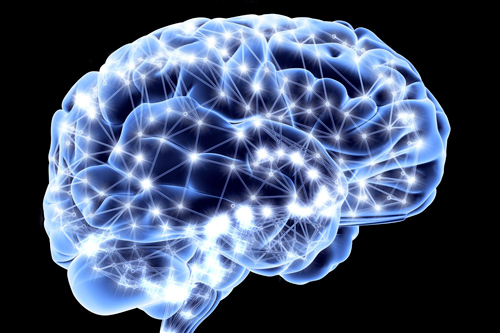
As adults, we experience the self as separate and independent. A baby, however, experiences the world as one; it does not yet know that its arms are an extension of its body, quite different and separate from the cradling arms of its mother. Freud described this as the “oceanic period.”1 I often wonder if the oceanic period is actual reality and our sense of separateness is merely an illusion, what Hindus call “maya.” According to the Vedanta school of Hinduism, Maya is the divine being who creates the illusion of duality in the universe. From the perspective of eternity, each individual is like a drop of water in a boundless ocean. The goal of enlightenment is to understand this—to see that the distinction between the self and the rest of the universe is a false dichotomy.2
My interest in this Eastern philosophical perspective drew me to study Carl Jung in college, and to revisit his theories now as a psychiatrist. Jung’s structure of the psyche—the conscious ego, the personal unconscious with its complexes, and the collective unconscious with its archetypes—remains an effective framework for understanding the self.
The Japanese author Haruki Murakami explores Jungian themes in the context of magic realism. In an interview after the publication of his novel Kafka on the Shore, Murakami said:
“I think of human existence as being like a two-story house. On the first floor people gather together to take their meals, watch television, and talk. The second floor contains private chambers, bedrooms where people go to read books, listen to music by themselves, and so on. Then there is the basement; this is a special place, and there are a number of things stored here. We don’t use this room much in our daily life, but sometimes we come in, vaguely hang around the place. Then, my thought is that underneath that basement room is yet another basement room. This one has a very special door, very difficult to figure out, and normally you can’t get in there…You…wander about in the darkness, and experience things there you wouldn’t see in the normal parts of the house.”3
Murakami’s metaphor is analogous to Jung’s model—the first and second floors of the house represent the conscious ego, while the first and second basement levels represent the personal and collective unconscious, respectively. The contents of the personal unconscious are derived from repression, whereas the collective unconscious contains archetypes—patterns of instinctual behavior that are similar in all individuals.4 The collective unconscious could be what connects ostensibly individual drops of water into one boundless ocean.
This second “basement room of the mind” is particularly interesting when one considers mental illness. From a Jungian perspective, perhaps individuals suffering from schizophrenia experience an unfiltered deluge of sounds, sights, and smells arising from their unconscious, whereas individuals without schizophrenia can keep these mental phenomena at bay through dopamine regulation and psychological filters.
In his seminal book, Far From the Tree, psychologist Andrew Solomon stresses the importance of addressing the biological, psychological, and social aspects of schizophrenia. Cognitive behavioral therapy has a strong track record; other talk therapies have been successful as well. Elyn Saks, a law professor who suffers from schizophrenia, has written poignantly of her redeeming experiences with psychoanalysis. Just as an individual who suffered a stroke may relearn talking through speech therapy, an individual with psychosis may be able to train his way partially out of it.5 Jungian analysis could help by creating a therapeutic space for patients to explore their personal and collective unconscious.
The concept of schizophrenia was questioned during the 1960s, when Michel Foucault, R. D. Laing, and Thomas Szasz declared that insanity was just a label utilized as a form of social and political control. This perspective fueled the deinstitutionalization movement, which has reduced the number of schizophrenics in long-term custodial care in the U.S. from more than half a million in 1950 to some forty thousand today.6 E. Fuller Torrey, a preeminent psychiatrist and vocal critic of deinstitutionalization, said, “Freedom to be insane is an illusory freedom, a cruel hoax perpetrated on those who cannot think clearly by those who will not think clearly.” I experienced firsthand the aftershock of deinstitutionalization while working at the forensic psychiatry inpatient unit at Bellevue last summer, where I treated many patients with serious mental illness who shuttled between incarceration at Rikers Island and homelessness on the streets of New York because there was simply nowhere for them to go for long-term treatment.
To provide the care needed by those with schizophrenia, we must expand the number of beds in inpatient units, reinvest in state hospitals that provide long-term care, and create additional community mental health centers for outpatient treatment. With these resources in place, more individuals will have the opportunity to undergo psychotherapy, which could help them obtain deeper insight into their psyches and more effective coping skills for living with their mental illness.
Psychiatry has made significant progress over the years, but the mind remains a black box. Jung understood that we were only beginning to learn about human psychology: we are still explorers, whose “maps would be re-drawn again and again.”7
Resources:
1.Vermorel, H. and Vermorel, M., eds. (1993). Sigmund Freud et Romain Rolland: Correspondance 1923-1936. Presses Universitaires de France, Paris.
2.Brodd, J. (2003). World Religions. Saint Mary’s Press, Winona, MN.
3.Strecher, M. (2014). The Forbidden Worlds of Haruki Murakami. University of Minnesota Press, Minneapolis, MN. p. 21.
4.Bennet, E. A. (1983). What Jung Really Said. Schocken Books, New York. p. 66.
5.Solomon, A. (2012). Far From the Tree. Scribner, New York. p. 317.
6.Solomon, A. (2012). Far From the Tree. Scribner, New York. p. 314.
7.Bennet, E. A. (1983). What Jung Really Said. Schocken Books, New York. p. 68.
Click here to get inspired by Rose’s easy steps to positively change your mind


